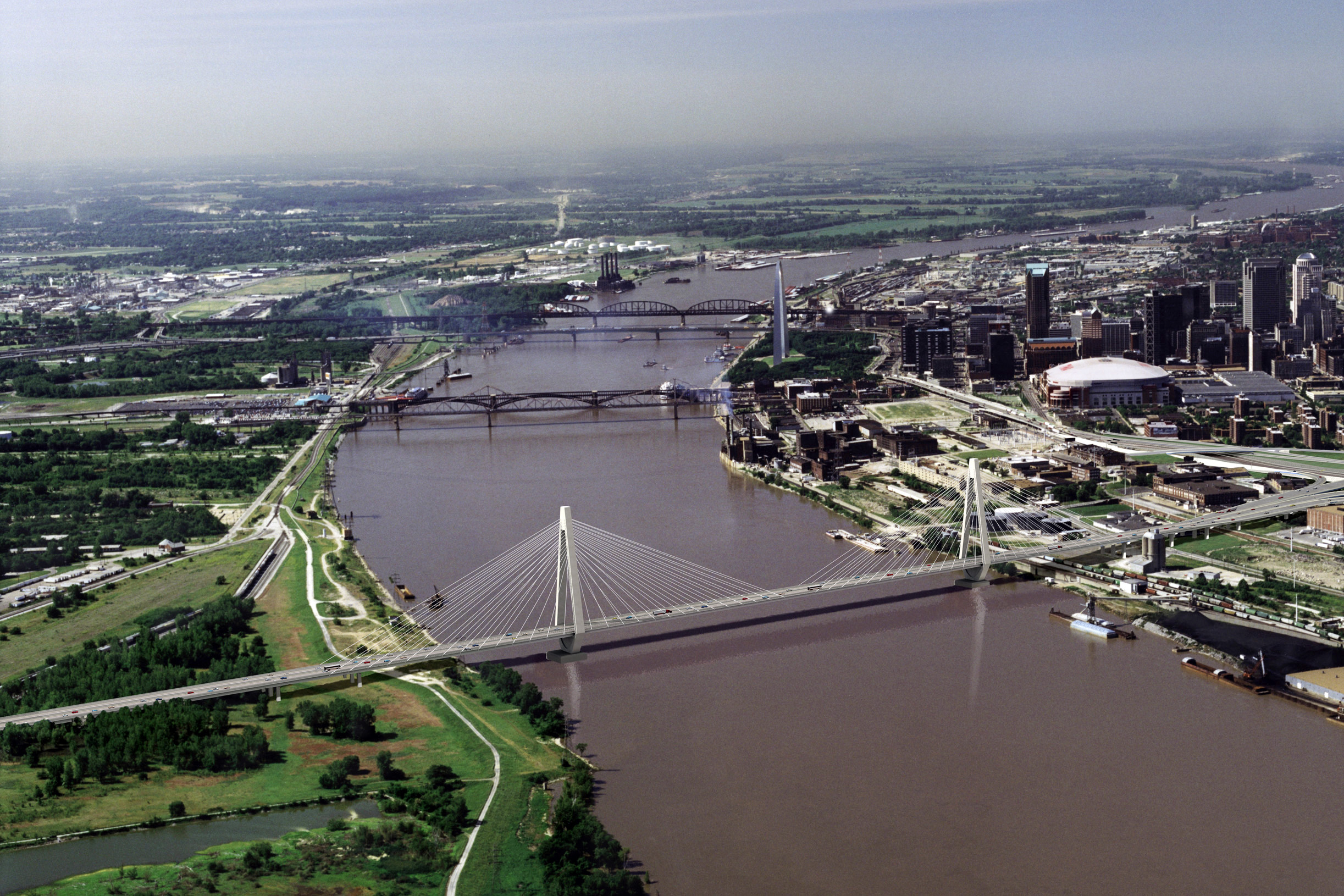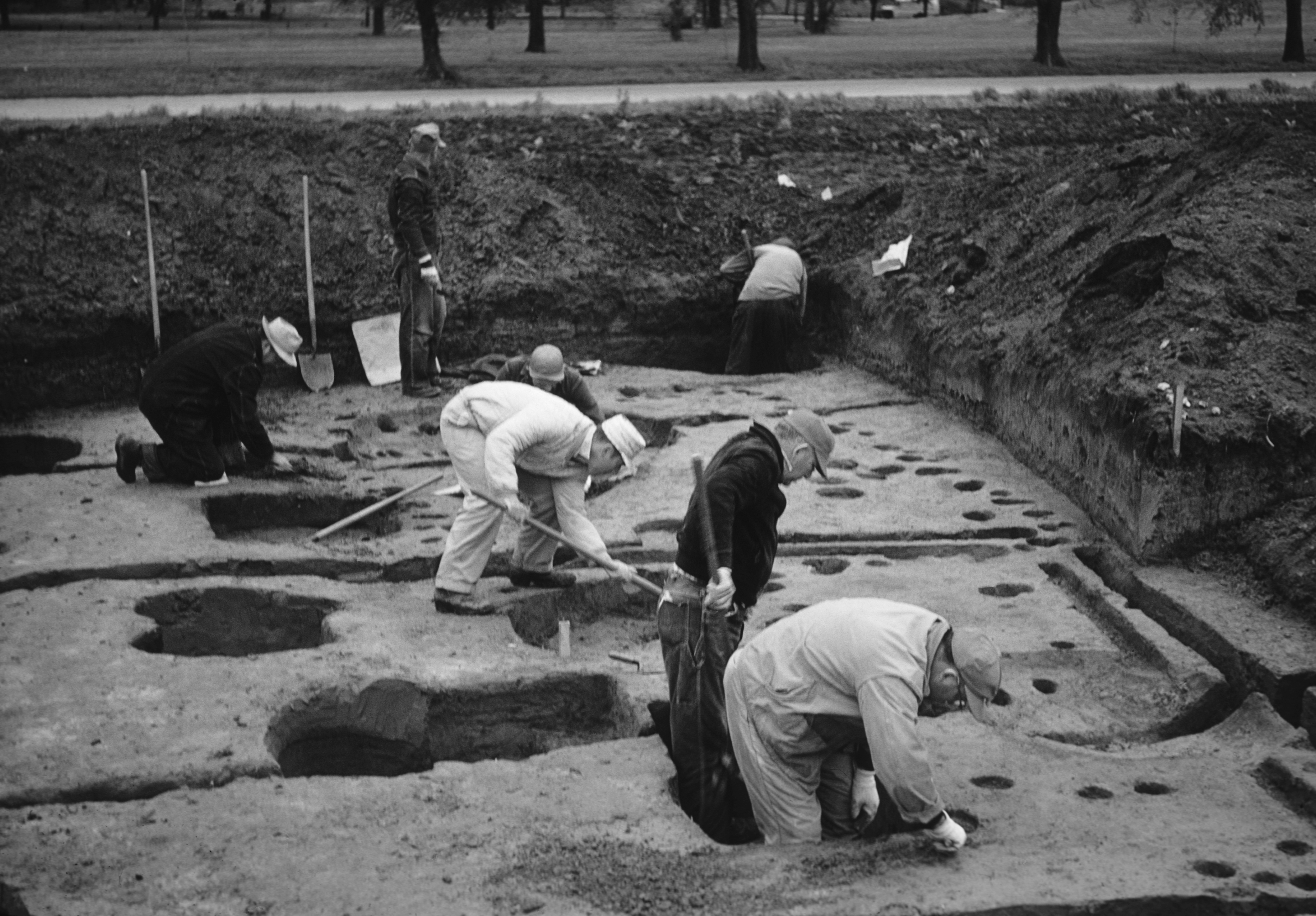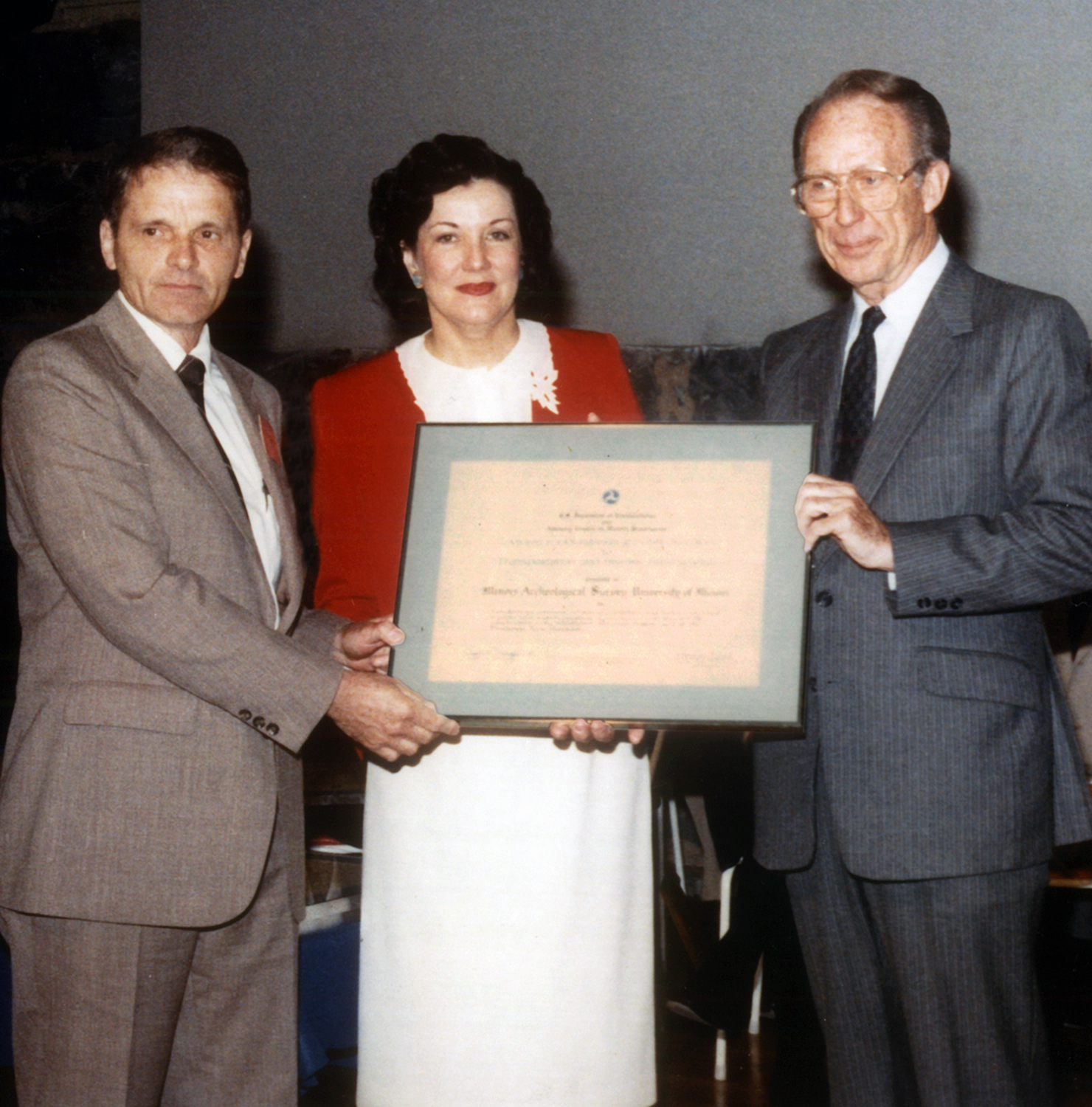Archaeology of the New Mississippi River Bridge
Building the Future
Like the construction crews who built the new bridge, teams of archaeologists worked along the new alignment of I-70 in East St. Louis (ESTL) to uncover new clues to the region’s recent and ancient history – their discoveries are helping to rewrite the history of the region, in effect building bridges to the past.

3D Rendering of New Mississippi River Bridge.
Before bridge and highway construction could begin, archaeologists from the Illinois State Archaeological Survey (ISAS) conducted scientific excavations. Required by state and federal preservation laws, the excavations were undertaken on behalf of the Illinois Department of Transportation (IDOT) and the Federal Highway Administration (FHWA). The archaeologists documented and removed information and artifacts from the path of construction. They uncovered the remnants of two cities: the early Euro-American city of East St. Louis dating from the 1800s to the early 1900s, and buried beneath this city, an ancient American Indian city dating many centuries earlier (A.D. 1000–1200).
Preserving the Past: IDOT Excellence in Cultural Resource Management
Transportation engineers, archaeologists, and the preservation community in Illinois have been cooperatively linked for a half-century. IDOT was one of the first state transportation agencies in the nation to respond to the passage of the Federal-Aid Highway Act of 1956, which allowed highway departments to use funds to conduct salvage excavations at archaeological sites threatened by construction. In June of that year, IDOT issued a directive to its engineers that “ruins having historical value should not be needlessly destroyed.” District engineers were instructed to work with archaeologists to “preserve or salvage archaeological remains” discovered in the highway right-of-way. From those modest beginnings IDOT and ISAS have developed one of the most-renowned, award-winning transportation archaeology programs in the nation.

Archaeological Excavations at Cahoka Mounds Tract 15B, April 1960.
In 2011, for the New Mississippi River Bridge project, IDOT and ISAS received the FHWA Environmental Excellence Award for excellence in cultural and historical resource studies and preservation. In 1984, for the I-255/270 project, which resulted in the excavation of more than 100 archaeological sites in Monroe, St. Clair, and Madison Counties, IDOT was recognized for “Outstanding Public Service to Transportation and Historic Preservation” by the U.S. Department of Transportation and the Advisory Council on Historic Preservation. The excavations revealed a long record of native campsites and villages dating back five to seven thousand years. The excavations documented the deep roots of native history and laid out the development of native societies through thousands of years, from small groups of hunting and gathering families to the home of North America’s first native city, Cahokia. And now, excavations for the Mississippi River Bridge project have revealed and documented part of its “sister city” hidden under present-day East St. Louis.

Award to IDOT by U.S. Department of Transportation and Advisory Council on Historic Preservation for Archaeological Investigations for the FAI-255/270 project (1984)
-Tom_Emerson-Daniel_Mathis_Division_Administrator_for_FHWA-Washington_Division_Olympia,%20WA.jpg)
FHWA Award to IDOT/ISAS for Excellence in Cultural and Historical Resources for the New Mississippi River Bridge Project (2011)